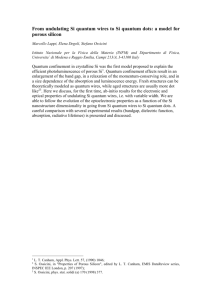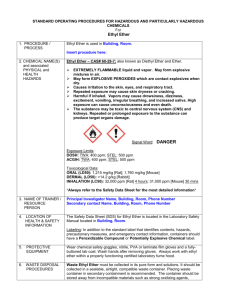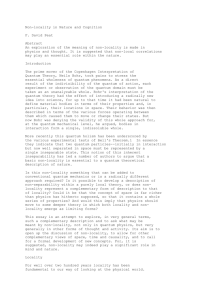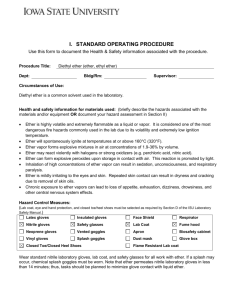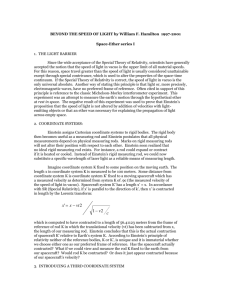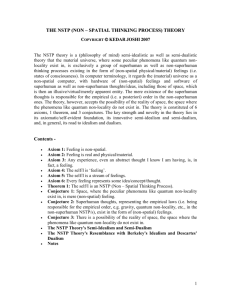Ether and Atoms: Hypotheses and Realities
advertisement
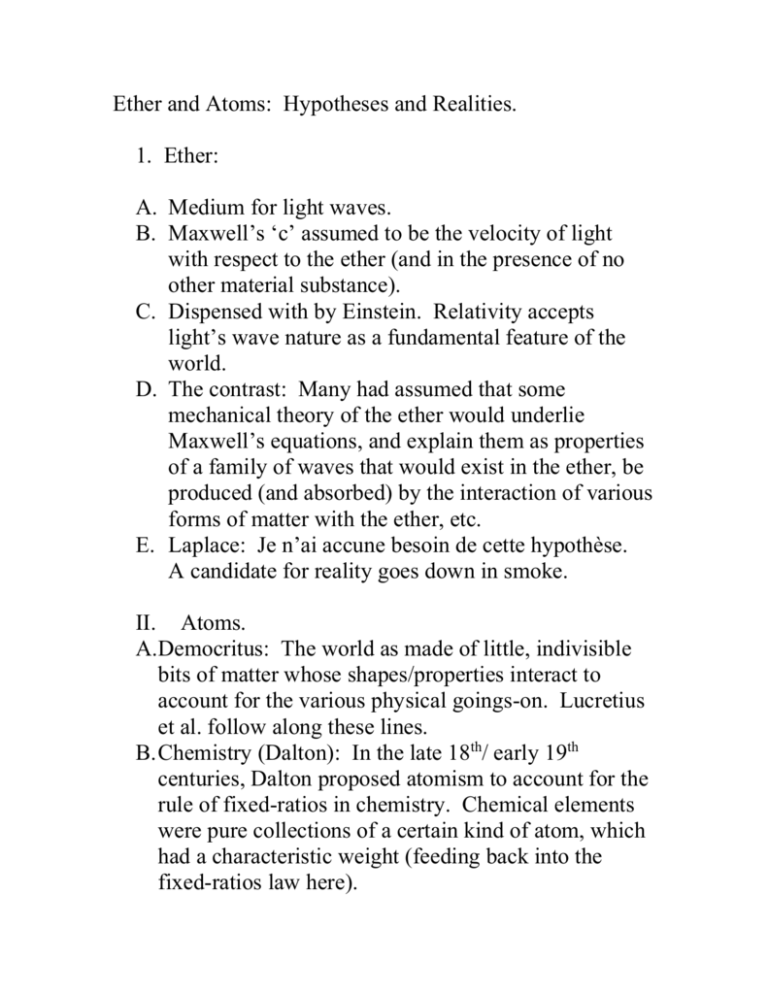
Ether and Atoms: Hypotheses and Realities. 1. Ether: A. Medium for light waves. B. Maxwell’s ‘c’ assumed to be the velocity of light with respect to the ether (and in the presence of no other material substance). C. Dispensed with by Einstein. Relativity accepts light’s wave nature as a fundamental feature of the world. D. The contrast: Many had assumed that some mechanical theory of the ether would underlie Maxwell’s equations, and explain them as properties of a family of waves that would exist in the ether, be produced (and absorbed) by the interaction of various forms of matter with the ether, etc. E. Laplace: Je n’ai accune besoin de cette hypothèse. A candidate for reality goes down in smoke. II. Atoms. A. Democritus: The world as made of little, indivisible bits of matter whose shapes/properties interact to account for the various physical goings-on. Lucretius et al. follow along these lines. B. Chemistry (Dalton): In the late 18th/ early 19th centuries, Dalton proposed atomism to account for the rule of fixed-ratios in chemistry. Chemical elements were pure collections of a certain kind of atom, which had a characteristic weight (feeding back into the fixed-ratios law here). C. Statistical Thermodynamics (Bolzmann, others): Late 19th century. Here again, the hypothesis that matter is made up of little bits gets to do some real work. D. Counting atoms: Here’s where the rubber met the road in a really convincing way. We measured the unit charge (Millikan) and compared it to the charge on a mole of ionized gas to count the atoms in a mole. We measured the unit mass (as determined from Brownian motion) of a molecule and use it to count the molecules in a mole. We soon found other measures as well, including radioactive decay rates and the level of radioactivity emitted by samples and measures of the mass of alpha particles, which were soon identified as helium nuclei. All these studies gave us the same result (within about 1%, as of 1974) for Avogadro’s number (the number of molecules in a mole, or gram-molecular weight): 6.02252X1023 molecules per gram mole. Quantum Realities: A. The constraints (basic issues that make the quantum world really weird): i. The measurement problem: A measurement result does not reflect a property that the system has before it is measured, but instead emerges out of an interaction between the system and the measuring device. ii. Non-locality: A measurement made here can have an instantaneous effect on the state of a particle light-years away from us. B. The Responses: Interpretations of Quantum Theory. 1. No Deep Reality (Copenhagen 1) There is no real quantum world ‘beneath’ the phenomena we observe. All we have is the apparatus of quantum theory, which allows us to make predictions about what we will observe, but which does not describe a reality which lies deeper than what we observe. 2. Observer-Created Reality (Copenhagen 2) a. The choices we make as observers (to measure momentum rather than position, for example) determine what properties a thing will have (and what properties it consequently cannot have). b. Reality as a whole is brought into being by the act of observation. 3. Reality is undivided wholeness Focused strongly on non-locality, this position holds that the separations we make between individual particles (in separate locations) are misguided, as are the distinctions we normally draw between observer and observed. 4. Many Worlds Because a measurement made on a quantum object (‘quon’) in a given state can (in general) have a number of different outcomes, and each of these possible outcomes has equal status from the point of view of the theory, we must wonder why it is that the result of a measurement is always exactly one of these outcomes. The many-worlds view slips past this puzzle by proposing that every outcome occurs, but that the world divides to make room for these different (incompatible) results. 5. Quantum Logic The properties of quons are connected to each other in ways that ordinary properties are not. We can capture the structure of these connections in a logic different from the usual Boolean structures of classical logic. This view of quantum theory proposes that this is exactly what quantum theory has to teach us: That we have been using the wrong logic, and we have to learn to think in terms of the new logic. 6. Neo-Realism This view emphasizes non-locality, and as a result is able to describe a ‘deep reality’ (as against reality 1) in a familiar way: on this view quons really do have position and momentum and all the other familiar physical properties— but these respond in complex, non-local ways to the measurements we make, to meet the constraints of quantum theory. 7. Consciousness-Created Reality (a narrower version of 2) On this view the kind of observation that’s required is an interaction between a quon and a conscious mind (whatever that is). 8. Heisenberg’s ‘Duplex’ world. This last account of what quantum theory is about distinguishes between deep reality (which is made up of ‘semireal’ potentials) and observed reality (in which some of these potentials are become fully real, i.e. they are actualized). These potentials are more real than ‘mere’ possibilities, but less real than actual measurement results.





